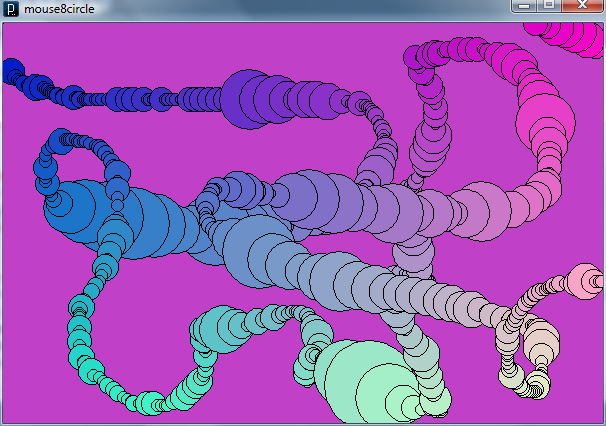Well, I have 69 links stored up, wade through them here if you want unedited content. I’ve decided that getting 7 links out per post is a good round number, so here’s the first.
- This is my screen-saver du jour: Pixel City (put the .scr file in your Windows directory). It’s fully described (along with source) in this great set of articles; if you’re too busy to read it all (though you should: it’s an fun read and he has some interesting insights), watch the video summary on that page. If you feel like researching the area of procedural modeling of cities more thoroughly, start here.
- The book Real-Time Cameras, which is about camera control for games, now has a sample excerpt on Gamasutra.
- NPR: Forrester Cole has two worthwhile GPU methods for deriving visible line segments for a set of edges (e.g., computing partial visibility of geometric lines). He’s put source code for his methods up at his site, the program “dpix“. Note: you’ll need Qt to compile & link.
- The author of the Legalize Adulthood blog has recently had a number of posts on using DirectX10.
- DirectX9 is still with us. Richard Thomson has a free draft of his book about DirectX 9 online. He knows what he’s about; witness his detailed pipeline posters. The bad news is that the book’s coverage of shaders is mostly about 1.X shaders (a walk down memory lane, if by “lane” you mean “horrifically complex assembly language”). The good news is that there’s some solid coverage of the theory and practice of vertex blending, for example. Anyway, grist for the mill – you might find something of use.
- Around September I have 6 weeks off, so like every other programmer on the planet I’ve contemplated playing around with making a program for the iPhone. The economics are terrible for most developers, but I’d do it just for fun. It’s also interesting to see people thinking about what this new platform means for games. Naturally, Wolfenstein 3D, the “Hello World” of 3D games, has been ported. Andrew Glassner recommended this book for iPhone development, he said it’s the best one he found for beginners.
- Speaking of Andrew, he pointed me at an interesting little language he’s been messing with, Processing. It’s essentially Java with a lot of built-in 2D (and to a lesser extent, 3D) graphics support: color, primitives, transforms, mouse control, lerps, window, etc., all right there and trivial to use. You can make fun little programs in just a page or two of code. That said, there are some very minor inconsistencies, like transparency not working against the background fill color. Pretty elaborate programs can be made, and it’s also handy for just drawing stuff easily via a program. Here’s a simple image I did in just a few lines, based on mouse moves:

That’s seven – ship it.
Pingback: Real-Time Rendering · Tools for Teaching
Pingback: Real-Time Rendering · “Processing” course from Andrew Glassner
Pingback: Real-Time Rendering · Free/Cheap Processing Course by Andrew Glassner